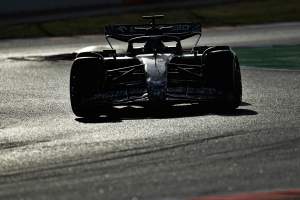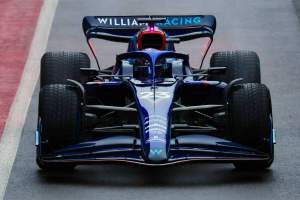Up Next

After months of keen anticipation from fans, media, teams and drivers, the 2022 Formula 1 season is properly underway with the first of three days of pre-season testing at Barcelona this week.
But testing times are notoriously unrepresentative and with many teams keeping their cards close to their chest, it can sometimes be hard to know what to take away from pre-season testing.
But our writers at the track have dug deep into the laptimes, watched the cars trackside and followed every minute of the opening day of action to bring you the key lessons from day one.
MCLAREN GETS THE LEAST VALUABLE P1 OF 2022

We might as well rip this bandage off quickly – there’s no way to draw performance-based conclusions from the opening day.
McLaren and Ferrari may well be encouraged by their start to pre-season testing but that’s unlikely to be defined by the fact they were first and second on the leaderboard.
Lando Norris’s lap was on the C4 Pirelli tyre, the second-softest compound, while most set their bests on the middle-of-the-range C3. And with the usual caveats for fuel loads and engine modes and driver effort applied, there’s just no way of knowing yet if the order is at all representative or if the gaps are easily explained by myriad factors.
“It’s way too early to tell anything, of course,” said Norris. “Now we’re P1 and everyone’s going to think we’re going to win the race, but no chance!
“No, I think it feels good, I think we made some good improvements already from the beginning of the day, but we’re only on day one of the season, and even if we’re amazing now, everything can change by the time we get to the first race and everything could change by the second.”
McLaren’s technical director James Key added “this has been a productive first day for us.”
“We’re not taking any notice of laptimes at the moment, it’s all about learning and following our own directions and priorities. We gathered some important data points during this first day of testing and learned a great deal, both to carry forward for the rest of this test and also to use as we develop the car further.”
What matters more than ever at the start of this test is mileage, correlation and understanding. These are the primary goals with a vastly different ruleset. It is going to take some time for the teams to start to unleash their true performance.
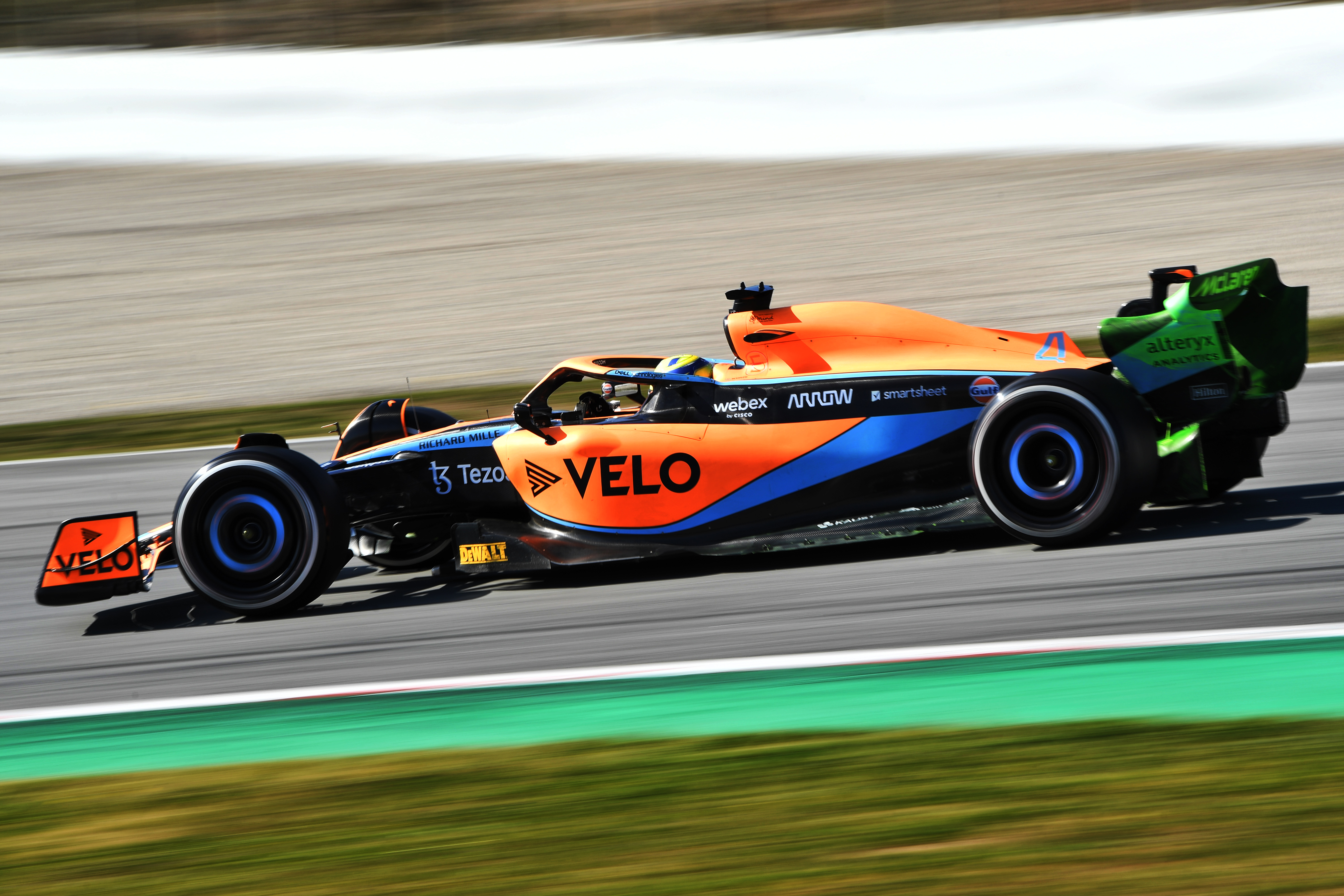
Longer runs are always more useful in testing but the big lap counts were achieved today through many, many shorter stints. Hopefully, that will become a bit more informative tomorrow but even that value will be limited.
“The rate of development that everyone’s going to bring to the first half of the season is going to be extremely high,” said Norris.
“I just hope it’s fast – it feels good, definitely many things to work on, some things not feeling so good, but for a new car and something we’ve never drove before, for so many new things, I think it was a decent start.”
MASSIVE RULE CHANGE BUT TEAMS AVOID A 2014 REPEAT

It’s no understatement to say there was a night-and-day difference between the mileage on day one of this test and the 93 laps managed when the V6 turbo-hybrid era began in 2014.
Yes, there were mechanical problems for Alfa and McLaren needed to reset its engine’s protection mode in the garage, but those were both minimal in the context of the 1104-lap tally racked up by the teams cumulatively. They were also to be expected given the scale of the changes.
The impact on the day’s running was nothing like what happened in 2014 because the engine formula – at the time new to all manufacturers and teams – is such a known quantity at this point.
While the chassis side has changed dramatically, a fundamental reliability factor has stayed the same. So despite several teams facing setbacks while readying their new cars, it’s impressive that they hit the ground running in this fashion.
Well, most did…
TWO TEAMS ARE ALREADY ON THE BACK FOOT
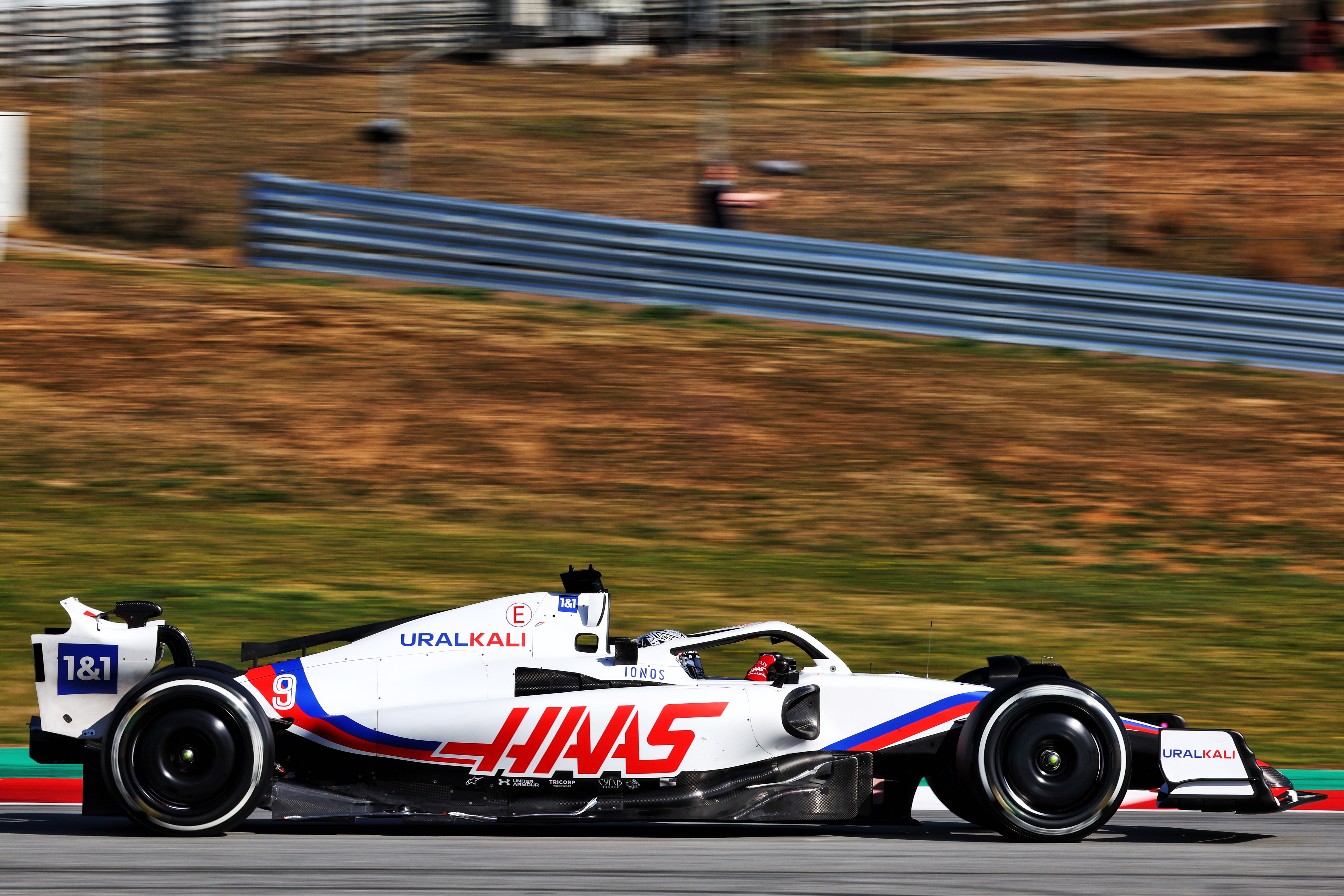
Inevitably, not everyone had a clean start to testing. Alfa Romeo and Haas endured quite the opposite.
Though they are linked by having a Ferrari engine, that’s not the case. Instead, they each had a brace of problems on either side of the lunchbreak.
Haas was limited to 43 laps because of a cooling leak and then a damaged floor.
Alfa Romeo only managed a paltry 32 after a pair of “mechanical” problems. Something is understood to have physically broken in the morning and afternoon.
Alfa Romeo is looking into it and should have it sorted for tomorrow. The team doesn’t think it’s a fundamental problem that requires a redesign.
FRONT SUSPENSION TRICKERY
Changes in the 2022 regulations prevent any significant ride height control when steering lock was applied.
This was used in the previous generation of cars to get the front end lower when more lock was applied to help the front wing work better in slower corners.
You can’t do that this year, but both Red Bull and Alfa Romeo appear to have hit on a way to achieve a comparable effect using caster.
It remains to be seen how effective this is, and how controllable it is, but the unconventional suspension geometry with a big offset between the height of the mounting points of the front and rear legs of the wishbones suggests the two teams believe this has significant value.
WHERE THE NEW CARS ARE BETTER AND WORSE THAN BEFORE
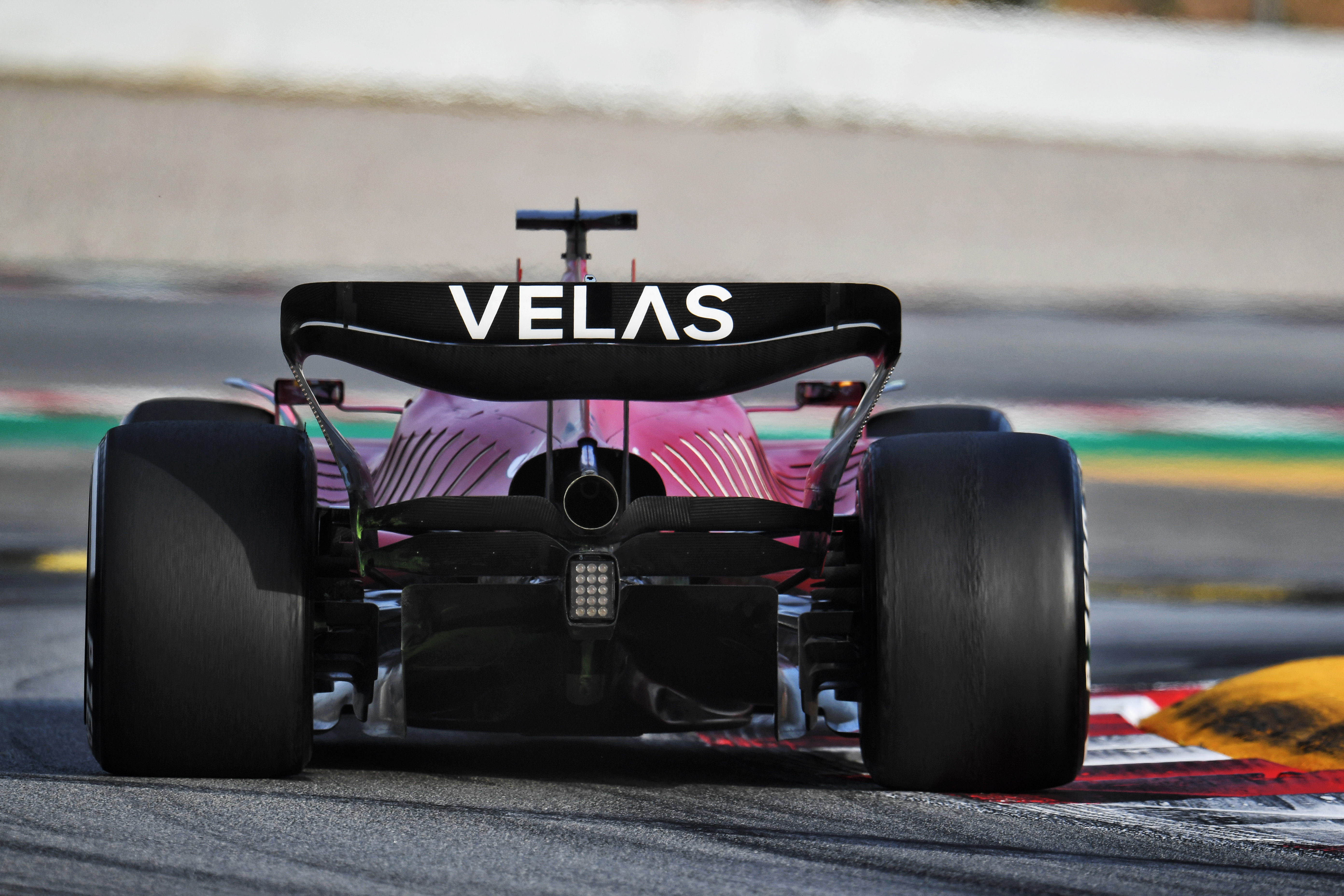
Common sense and simulations had indicated the new-generation cars would be faster in the high-speed stuff and slower at low speed.
The first day of testing has proven that’s the case. With less drag but a potent ground effect, these cars are flying through quick corners and travelling faster down the straights.
But they are heavier than last year, being run stiffer, don’t have the hydraulic trickery on the suspension they had before and are subject to reduced aero load and low-speed. And that is killing them through the slowest corners.
Mark Hughes’ view of the final chicane told a clear story: “The cars are so slow through there, even the fastest ones – visually slower than the slowest of the old cars.
“Through the preceding Turn 13 you can see them understeering quite heavily, so they are already slower as they exit onto that short chute before the chicane. But then they have to brake more to get turned in and they remain slow all the way through to the apex.
“It really is quite stark. The first few cars through make you question whether they are about to pit. But no, they are just struggling here – aerodynamically, from the extra weight of the wheels (which the drivers are reporting you can really feel under braking) and from not being able to take as much kerb as before because of the stiffness of the suspension and their more rudimentary technology.”
TEAMS EXPERIENCE UNEXPECTED GROUND-EFFECT PROBLEM
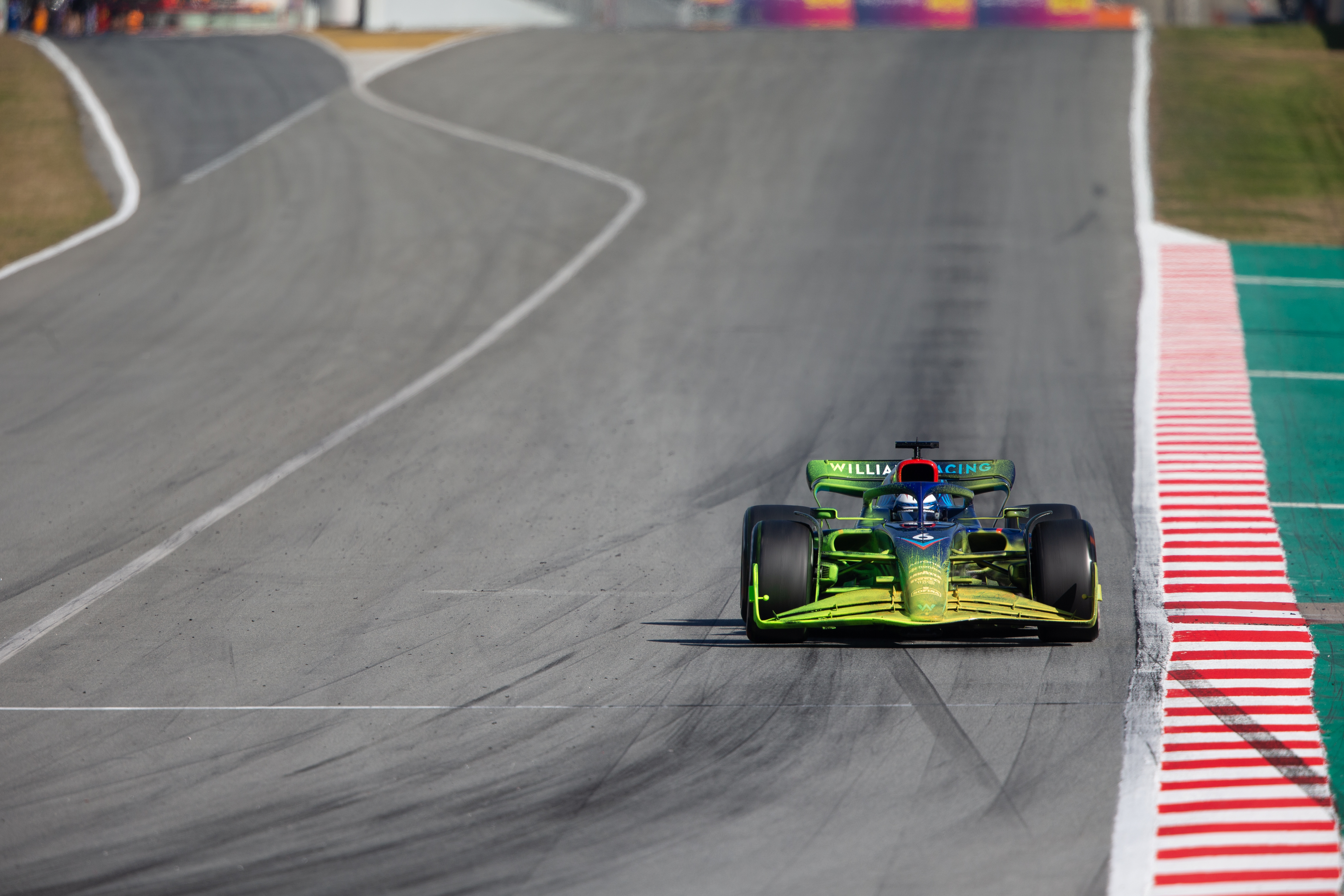
One of the main surprises of the first day of testing is the amount of porpoising the cars are suffering from.
Porpoising happens as the car is approaching maximum speed and hence load, which in turn reduces the ride height. If the separation is sufficient to mean that the downforce is reducing, then the car will be released and the ride height will increase.
Then, the airflow will reattach and the ride height will again reduce creating the same separation. This cycle will continue with the front of the car bouncing up and down.
It wasn’t visible in the simulations for the majority of teams, but most of them are struggling with it now their cars have hit the real-life circuit.
Apparently, Alfa Romeo suffered from it so badly at its Fiorano shakedown that it wore a hole in the car.
And it has reared its head for a few teams in Spain. Perhaps that was why we saw so many teams carting around replacement floors today too – Haas, McLaren and Aston Martin all needed changes by our count. Perhaps others did too.
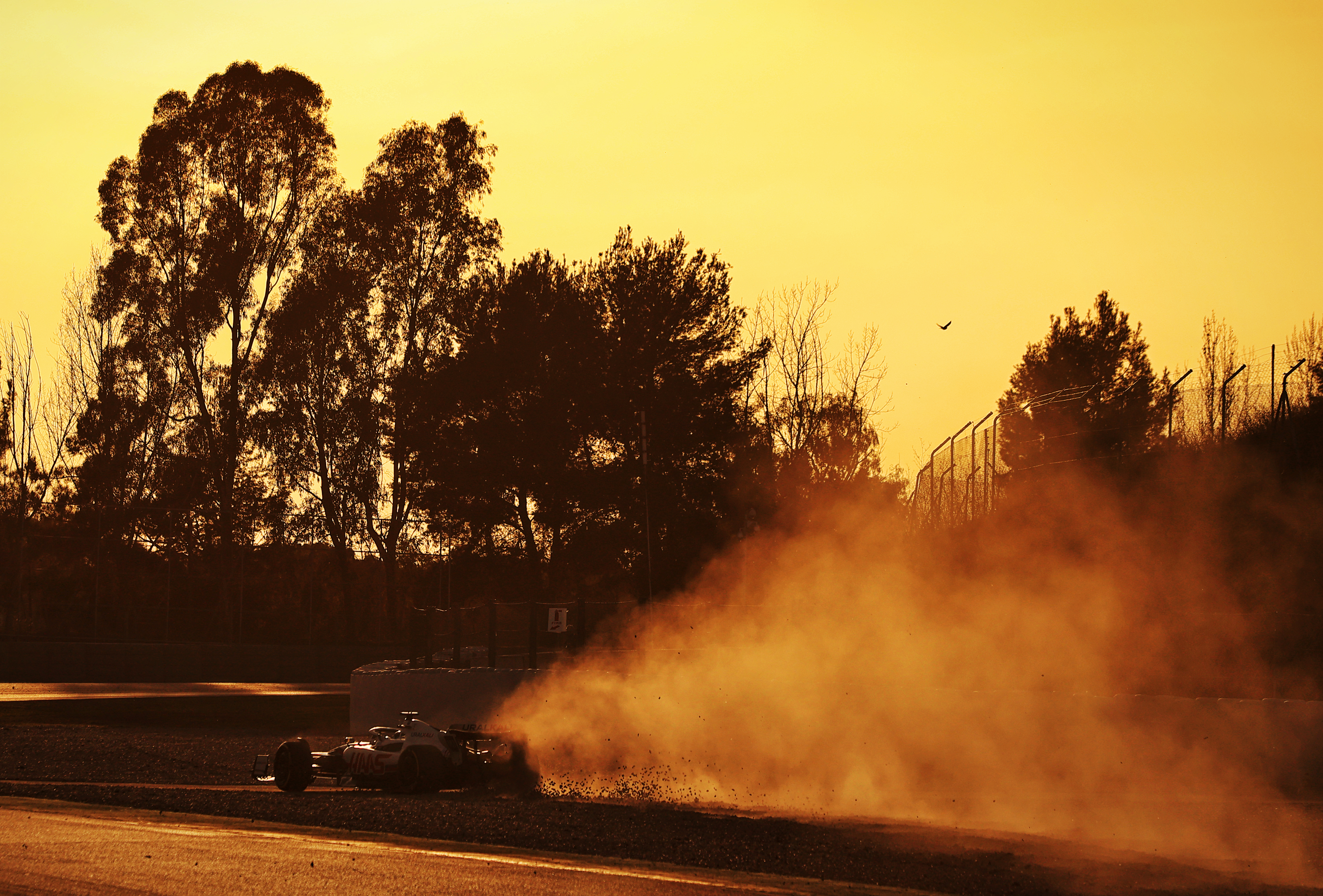
Gary Anderson had a few conversations with those up and down the pitlane and it appears that the porpoising that these cars seem to be suffering from is reduced when the DRS is in operation. When the DRS is open the car loses rear downforce and the rear ride height increases and the front ride height and especially the front wing gets lower.
If, during this, the porpoising reduces then we can assume that it is not coming from the front wing as it is now closer to the ground.
We could also surmise that it is coming from either the throat area of the underfloor as it has increased its gap to the ground making it less prone to airflow separation.
However, it could also come from the fact that the sides of the floor will not seal as well as they did when the car was lower to the ground. So the diffuser will not be as powerful, which will reduce the airspeed going under the floor of the car again reducing the potential for airflow separation.
RED BULL HAS PULLED OUT ALL THE STOPS
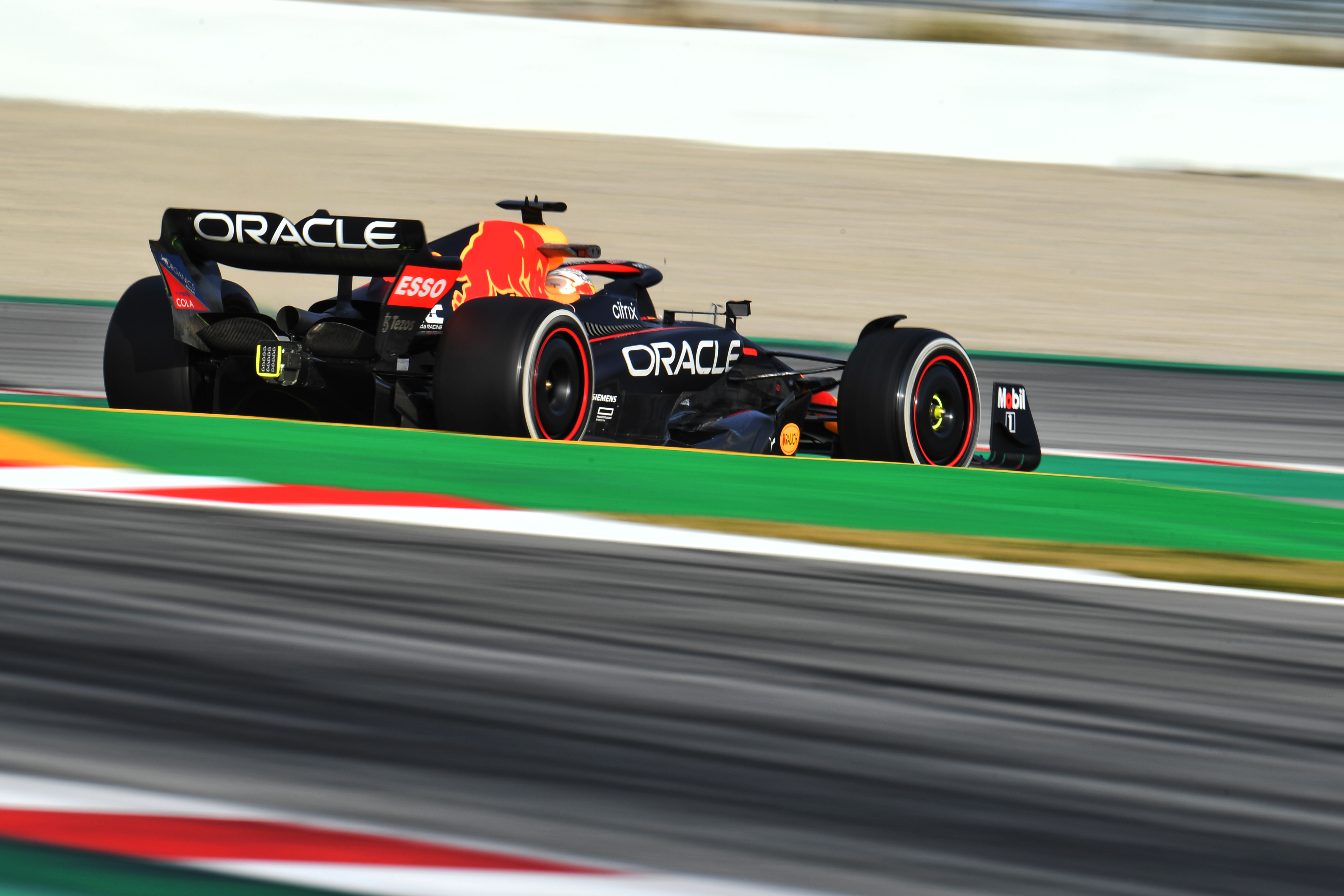
We had to wait a long time to see the Red Bull RB18 properly, with the car launch conducted using a show car and only a few fleeting glimpses from the shakedown on social media.
But when it hit the track today, the patience was rewarded with a striking, aggressive design that, if looks and distinctive ideas added up to lap time, would surely be a world championship winner.
Red Bull has gone with pullrod front suspension and pushrod at the rear, which flips the script from last year’s convention. The front suspension geometry also hints at some clever ride height trickery, of which more in a moment.
The front of the sidepods with the aggressive undercut is what really catches the eye. The sidepod and the floor are completely separate for the front part of the sidepods, but then blends into a more conventional rear end with the downwash ramp bringing airflow down from the top surface.
Then, at the rear, the two-piece beam wing is the most extreme we’ve seen. Effectively, the lower part of this is there to extend the top of the diffuser to help pull airflow through the underfloor.
“We gave ourselves the optimistic target of 700km and we finished around three laps short of that, which for the first day of testing is quite unusual. Things went well, we did some tests and we have a good direction for how to improve the car,” was Red Bull’s head of engineering Guillaume Rocquelin’s (better known as ‘Rocky’) assessment of its opening day.
Everything about the Red Bull is all-out and uncompromising – and the car proved to be reliable on the first day of running too. The question is, just how fast is it?
WILLIAMS, ALPINE DOWN TO BUSINESS AFTER SETBACK RUMOURS
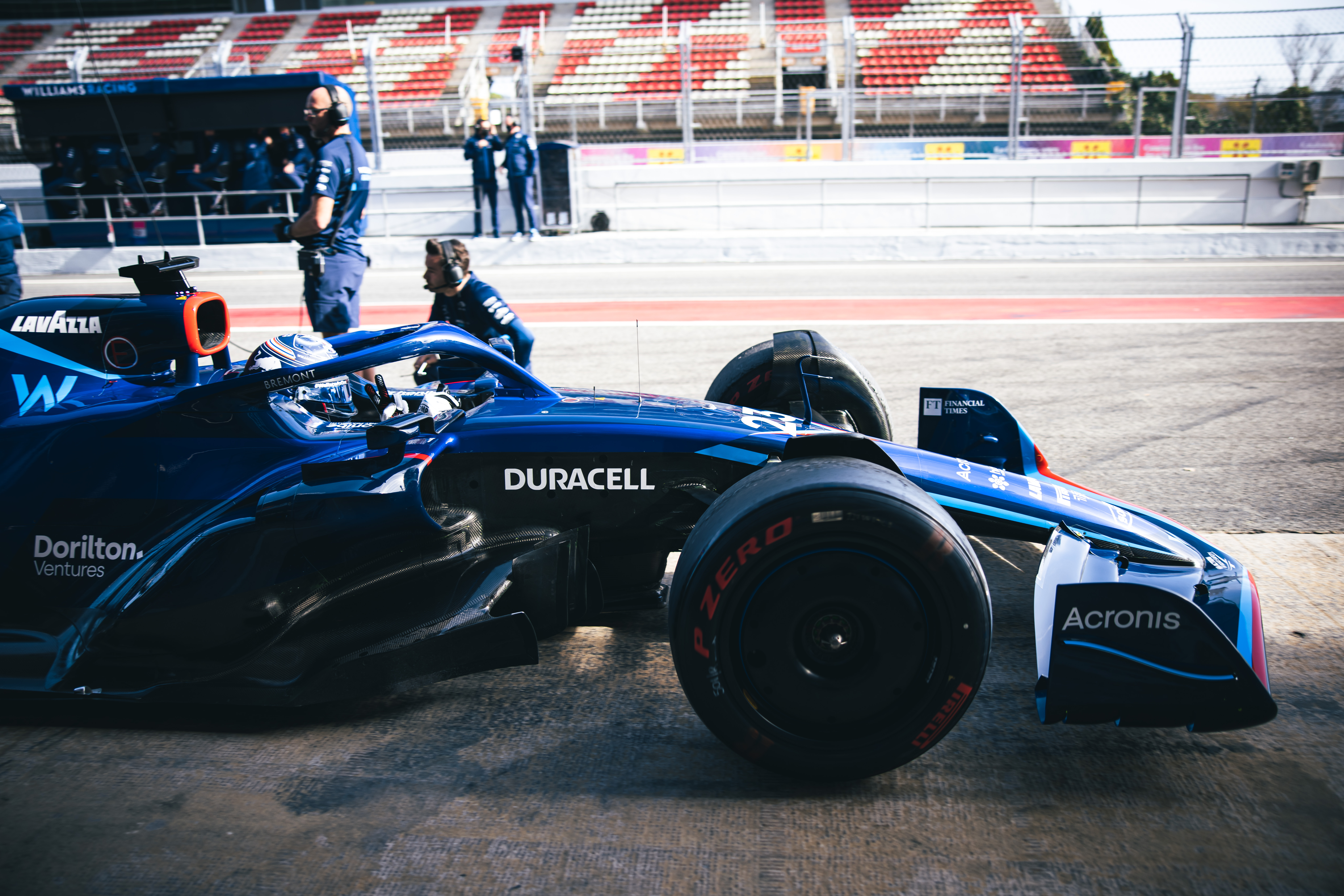
Two of the teams that had not insubstantial question marks hanging over them came away from the opening day with plenty to smile about.
A month or so ago there were hints that Williams might be on a similar trajectory to 2019, as far as being ready for testing went, at least. But it had the third-highest total number of laps of any team, with Nicolas Latifi and Alex Albon contributing 66 each and able to crack on with their respective programmes with the FW44.
Williams’ day was going so well it even began to focus on performance runs towards the end of the day.
Alpine meanwhile was thought to be up against it on the production front, and faced setbacks getting the car built in time for its shakedown on Tuesday, yet ended the day just shy of Williams’s lap total.
The biggest disruption it appeared to face was the confusion caused when Esteban Ocon’s name erroneously appeared on the timing screens when Alonso first headed back on track in the afternoon, though the team also suffered from a defective DRS in the afternoon.
But still, both managed strong lap counts, had no stoppages, and completed programmes noteworthy for how unnoteworthy they were.
For both teams, it’s a day where external expectations were exceeded.
RIVAL TECH CURIOSITY IS GREATER THAN EVER

One team boss we bumped into in the paddock had a huge smile on his face when we asked if he was enjoying the variety now that all the cars had been revealed.
“It’s incredible!” he said.
Paddock intrigue is at an all-time high because nobody knows who has the right solution – and the range of car designs that have emerged from these new regulations is beyond what anybody expected.
That’s why Lewis Hamilton was seen wandering up and down the pitlane before testing started, and stopped outside the Red Bull garage for a look at the RB18.
“Every year is exciting but in previous year it was an evolution of the previous year’s cars,” said Hamilton.
“In this one, it’s completely brand new. Of course, I’ve seen designs of our car over several months but now to see everyone’s car out there, you’re kind of just trying to get a close eye, see what’s different if there is anything why certain teams have chosen a certain route in terms of sidepod design, front wing and rear floor.
“It’s the most exciting [pre-season].”
Reporting from Jack Cozens, Gary Anderson, Scott Mitchell, Mark Hughes and Edd Straw.





